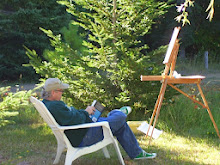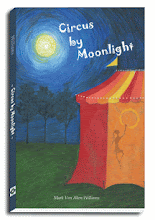I guess it is now perfectly clear that our president wants us to perpetuate our addiction to oil. He wants more offshore drilling (that’s right Florida, you heard me).
What we need to get through our heads, Mister President, is that we now need to follow the lead of the rest of the world. It is time for us to follow, since we no longer know how to lead. Gas is hitting the high prices that other countries already experience. The 4 to 5 dollar gallon is here to stay.
Think of China: while the bicycle is still used as an essential form of transportation, the country has recently seen a rapid decrease in bike ownership as their population becomes wealthier and turns to cars.
Think of the enlightened countries: a number of European and South American cities have set the standard for bicycle use and promotion, via pro-bike transportation and land use policies. They have provided heavy funding for bicycle infrastructure and public education. While biking remains popular for recreation in the US, it is underused for transportation. It now accounts for only 0.9 percent of all trips, with cycling to work at only 0.4 percent. The more progressive leaders today are working to bring cycling back to prominence in the urban transport landscape. It is a clean and efficient alternative to the automobile and a practical way to reduce congestion and pollution. Remember—more than half the world’s population now lives in cities.
There is tremendous potential for governments and urban planners to increase bicycle use. It promotes people’s physical fitness while helping to create cleaner, more livable communities, as well as addressing climate change. In Amsterdam, cycling accounts for 55 percent of trips to jobs that are less than 4.7 miles from home. The Dutch government has pledged to spend $160 million from 2006 to 2010 on bicycle paths, parking, and safety. Bogotá, Columbia, has more than 300 kilometers of bikeways, the most for any city in the developing world. In Australia, the state of Victoria has amended planning laws to require all new large buildings to provide bike parking and other facilities such as showers and lockers.
The best example is in Paris, with the low-cost Vélib rental scheme. They offer 20,600 bikes that can be rented by credit card at 1,451 stations throughout the city. The program logged 6 million rides in its first three months.
Funding for bicycle usage in the US has been for recreation use only, with $900 million a year in federal funding for the promotion of biking and walking. At least this can be seen as an encouraging sign, despite the unimpressive statistics. Perhaps if we follow the lead, this funding for recreation could be targeted towards integrating bicycles in transportation planning, educating the public about cycling’s benefits, and discouraging driving with restrictions and taxes on car ownership and parking.
With gas prices rising, we need a call for a broad coalition of citizen and environmental groups to call for safer, pedestrian-and cyclist-friendly roads designed for everyone, not just cars. Six states and more than 50 cities, counties, and metro regions have now enacted some form of this legislation. Let’s keep the momentum going. Forget about the quick fix of offshore drilling. Let’s think about our children’s future.
The world produced an estimated 130 million bicycles in 2007—more than twice the 52 million cars produced. Bike production is gaining steam.
It’s time to flip through my new Trek catalogue now. I’m thinking—the Soho S (single speed).
Subscribe to:
Post Comments (Atom)







1 comment:
I would love to ride a bike to get from here to there, within, say, 5 miles...but, it just doesn't feel safe or practical to do so. Smaller towns and larger cities have to make it safe for cyclists. I know there is a great bike trail in Athens, but what about riding on the street? I don't feel safe at times driving in crazy traffic, let alone on a bike. Perhaps the increased fuel costs will change the way roads are improved and expanded to allow for bikes. That would be great and I would be very likely to ride instead of drive the car.
Post a Comment